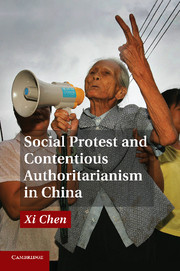Book contents
6 - “Troublemaking” Tactics and Their Efficacy
Published online by Cambridge University Press: 05 December 2011
Summary
September 1 is usually the first day of class for Chinese schools. On September 1, 2010, however, twelve recent elementary school graduates from Yancheng City, Jiangsu Province, did not go to class in a middle school. Instead, they went to the municipal government offices to have their first class. Outside the government compound, they began to study an essay with the title, “Opening Doors for Yourself.” In the rain, they read loudly, “there is no door in this world that you cannot open, only if you persist.” Those schoolchildren were protesting a local education reform policy, which stipulated that students should be assigned to schools according to their residential address. Originally, they expected to go to the best middle school in the city because of their parents’ employers’ monetary contribution to the school. Suddenly deprived of this expected privilege, those most persistent twelve families found a very special way to “open the door.” Their protest was peaceful and hardly disruptive in any sense. However, it was clear to government officials, as well as to the petitioners themselves, that this was a method of petitioning with “troublemaking” tactics.
The previous chapter shows that Chinese petitioners have developed a strategic pattern, protest opportunism. “Troublemaking,” as an essential aspect of protest opportunism, is generally viewed by petitioners as indispensable for the efficacy of their struggle. This chapter will continue to probe into “troublemaking” tactics in a more systematic way, noting in particular the range of such tactics and their actual effectiveness. Because the range and effectiveness of protest tactics can reveal some essential features of the political system, this study of specific “troublemaking” tactics can help us further understand how the particular political structure in China since the 1990s has shaped petitioners’ behavior.
- Type
- Chapter
- Information
- Social Protest and Contentious Authoritarianism in China , pp. 159 - 186Publisher: Cambridge University PressPrint publication year: 2011

